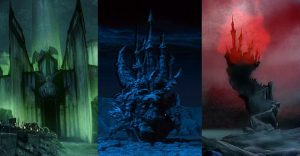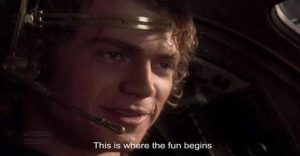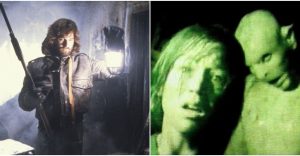Midnight Mass Wasted Its Scariest Twist

Although the Netflix horror miniseries is undeniably effective, Midnight Mass introduced a scary twist and never revisited the idea later in the show. Director Mike Flanagan’s Midnight Mass has been largely viewed as a triumph for the horror veteran, earning even more impressive reviews than The Haunting of Hill House and The Haunting of Bly Manor. The miniseries tells the story of a small island community that experiences strange “miracles” when a new, charismatic priest arrives in town, only to discover that the source of these events is more sinister than expected.
Patiently-paced, erudite, and thoughtful, Midnight Mass fuses religious satire with character drama to make for compelling viewing. However, like any show, Midnight Mass is not without its hard-to-explain plot holes. One such odd creative decision can be found as early as the end of the second episode.
The vampire that Father Paul Hill brings back from the Holy Land can imitate humans to lure in prey, as proven by the closing scene of Midnight Mass episode 2. The monster lures Bowl into a house to attack and kill him, and later the small-time drug dealer’s corpse is seen among those of a few other missing islanders near the end of the miniseries. However, viewers never see the vampire imitate a human again, even though this skill could have allowed it to avoid detection late in Midnight Mass. It is an odd decision when later episodes see Midnight Mass’ remaining characters attempting to kill the vampire to ensure it doesn’t make it to the mainland, something that would have been far harder if the monster didn’t announce its presence with inhuman screams and a terrifying appearance.

However, while Midnight Mass shows the vampire can imitate humans, the miniseries don’t necessarily leave the monster with a reason to do so. Thanks to Bev Keane “helping” Father Pruitt, the monster is provided with food by the misguided priests and rarely needs to feed off its own volition. Similarly, the fact that the vampire is unharmed by most attempts to attack it proves that it has little reason to be afraid of humans, meaning it may not bother hiding from the islanders because it doesn’t feel threatened by them.
Furthermore, the fact that the vampire could have imitated a human and provided itself with food could easily have let the character of Paul Hill off the hook if Midnight Mass had focused more on this idea. As is, the priest needed to actively sacrifice people to feed the monster, making him a more morally culpable and hypocritical figure than he would be if he had simply brought the vampire to the island. Midnight Mass’ Stephen King influence means many of the show’s main characters are morally ambiguous antiheroes, and Hill’s slide into villainy would not be as compelling if the monster did not rely on him to feed. As such, it makes sense that Midnight Mass largely ignored the vampire’s ability to imitate humans and lure in prey, despite how scary the twist is.
About The Author


















